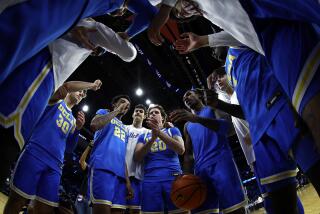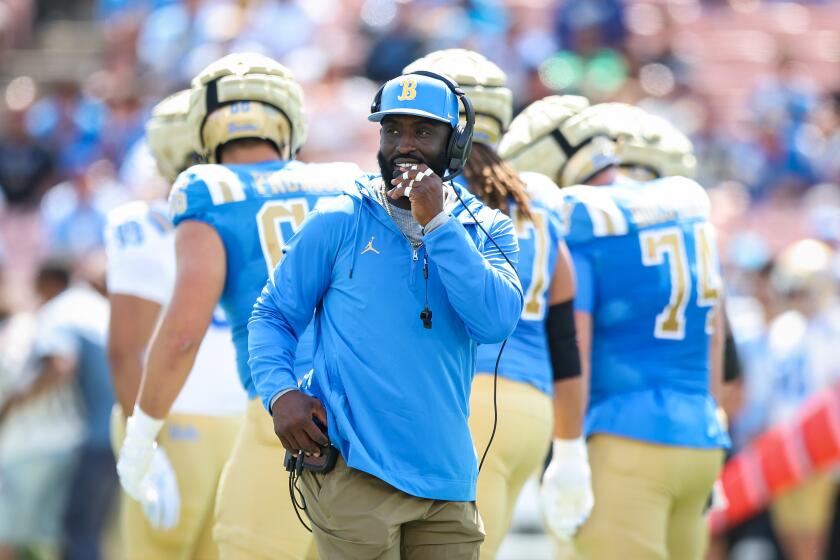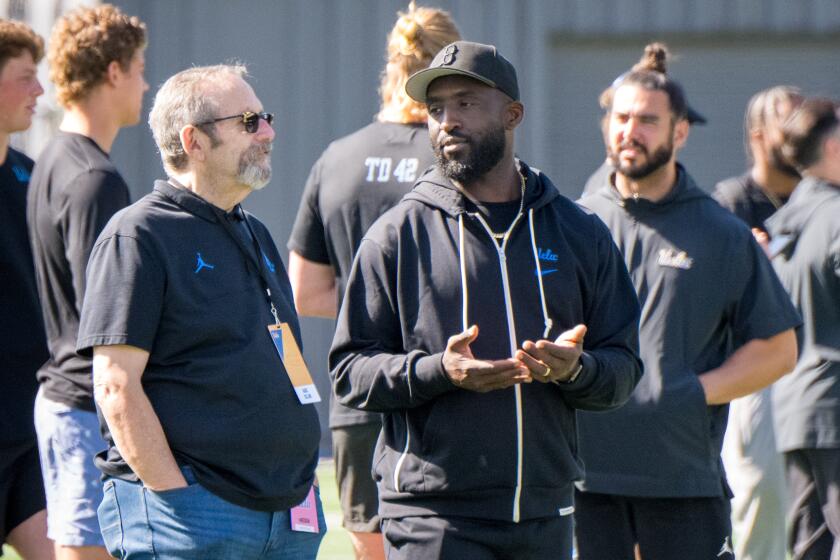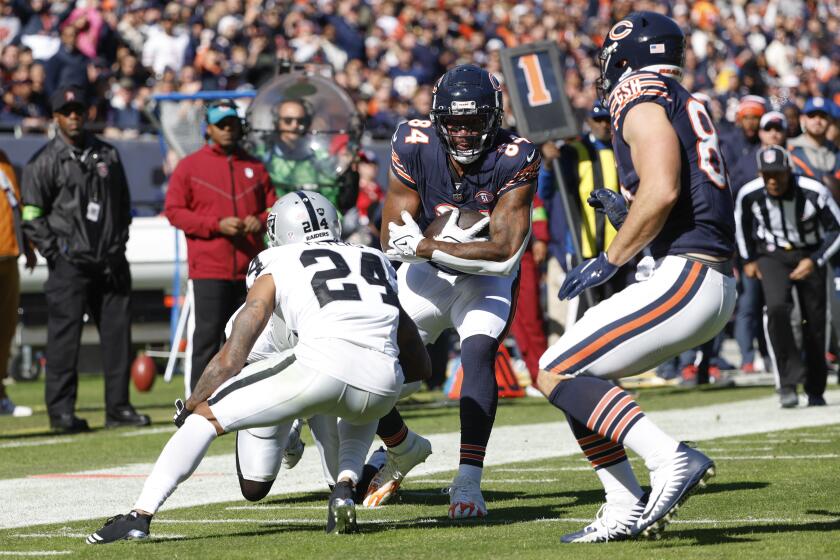UCLA’s marquee teams show improvement in latest academic progress rate report

Martin Jarmond can cross this one off his list, but only in pencil.
As UCLA made its athletic director hire official, the NCAA’s academic progress rate (APR) report released Tuesday showed UCLA’s marquee programs inching toward safety against potential sanctions.
With a multiple-year APR of 930 required to avoid penalties, the UCLA men’s basketball team, three points away from a postseason ban last year, jumped to 945, and the football team recovered from an avalanche of transfers in the first year of Chip Kelly’s tenure to boost its single-year APR by 61 points, although the team’s multiple-year APR fell by four points to 944.
The APR was established by the NCAA to monitor academic success in athletic programs by encouraging schools to retain scholarship athletes and keep them in qualifying academic standing. Scores are calculated by each scholarship athlete earning up to two points per academic term: one point for staying in school and another for being academically eligible. A team must have a multiple-year APR of 930 to avoid penalties that involve limited practice and postseason bans.
UCLA’s new athletic director Martin Jarmond will be besieged by a slew of challenges that go well beyond the uncertain resumption of play amid the novel coronavirus outbreak.
For the football team that has lost about 40 players since Kelly took over in December 2017, transfers impacted the team’s dramatic single-year drop from an APR of 971 in 2016-17 to 881 in 2017-18. As a result, the team’s multiple-year APR fell 19 points to 948 in Kelly’s first year.
The football team recorded an APR of 942 for the 2018-19 academic year. Because multiple-year APRs are measured for a four-year cohort, the team exchanged this year’s number for a 963 from the 2014-15 year, which led to the four-point multiple-year slip. Next year, the Bruins are due to drop a 973, a high score that puts pressure on the 2019-20 academic year’s success to maintain the multiple-year APR.
The Bruins lost about 12 football players early during the 2018-19 academic year by transfer or leaving for the NFL. If players transfer, they don’t necessarily diminish UCLA’s APR. The score would still be safe as long as a student-athlete earned the eligibility point in the last term prior to transferring immediately as a full-time student and had either a 2.6 grade-point average to enroll at a four-year university or a 3.3 GPA for a junior college.
Coach Chip Kelly said he is planning as if UCLA will play football this season because no one has definitely said what will happen in light of the COVID-19 pandemic.
The men’s basketball team’s APR had gradually decreased in each of the past five years. Last year, a single-year APR of 905 put the team at 933 for their four-year mark, just three points away from penalties. While three players from the 2018-19 team — Kris Wilkes, Jaylen Hands and Moses Brown — left school early, it is possible they did not damage UCLA’s APR if they departed in good academic standing, which would have saved the team from a postseason ban.
No other UCLA team had a multi-year APR lower than 961. The Bruins had three sports with perfect multiple-year APRs of 1,000 — women’s beach volleyball, men’s cross country and women’s golf — and 12 teams with perfect single-year scores, including nine from women’s teams.
More to Read
Go beyond the scoreboard
Get the latest on L.A.'s teams in the daily Sports Report newsletter.
You may occasionally receive promotional content from the Los Angeles Times.









